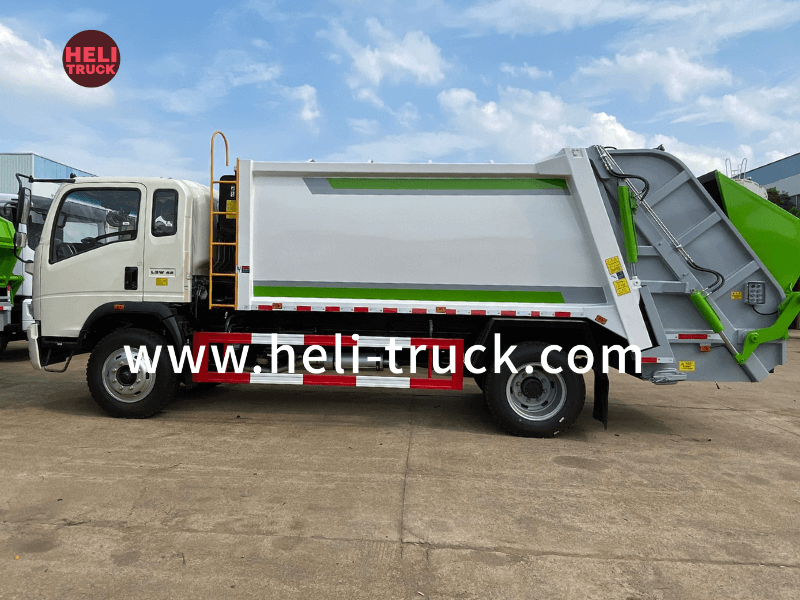Introduction
Public parks are vital spaces within urban areas, providing residents with a place to relax, exercise, and connect with nature. However, the high foot traffic in these parks often leads to the generation of a significant amount of waste, including food wrappers, plastic bottles, and other litter. Proper waste management is essential to maintain the cleanliness and beauty of public parks, as well as to protect the environment and wildlife.
One of the key tools in efficient waste management in public parks is the garbage compactor truck. These specialized vehicles play a crucial role in collecting, compacting, and transporting waste from parks to disposal sites. In this article, we will explore the importance of garbage compactor trucks in maintaining clean and healthy public parks, their design and functionality, as well as best practices for their operation and maintenance.
Importance of Garbage Compactor Trucks in Public Parks
Garbage compactor trucks are essential for managing waste in public parks for several reasons. Firstly, these trucks help to keep parks clean and attractive for visitors. By regularly collecting and compacting waste, they prevent litter from accumulating and ensure that the park remains a pleasant and inviting space for recreation and relaxation.
Moreover, garbage compactor trucks play a crucial role in preventing environmental pollution. Improperly disposed of waste in public parks can harm wildlife, contaminate water bodies, and degrade the natural ecosystem. By collecting and transporting waste in a controlled and sanitary manner, compactor trucks help to minimize the environmental impact of park waste.
In addition, garbage compactor trucks contribute to public health and safety by reducing the risk of pests and disease transmission. Accumulated waste in parks can attract rodents, insects, and other vermin, posing a health hazard to park visitors. By promptly removing and compacting waste, compactor trucks help to mitigate these risks and create a safer and healthier environment for park users.
Design and Functionality of Garbage Compactor Trucks
Garbage compactor trucks are specially designed vehicles equipped with a compaction mechanism that compresses waste to reduce its volume. These trucks come in various sizes and configurations to suit different waste collection needs, including those of public parks. The key components of a typical garbage compactor truck include:
1. Compaction Mechanism: The compaction mechanism of a garbage compactor truck consists of a hydraulically powered blade or plate that compresses the waste inside the truck's storage compartment. This compaction process significantly reduces the volume of waste, allowing the truck to carry more waste per trip and minimizing the frequency of trips to disposal sites.
2. Storage Compartment: The storage compartment of a garbage compactor truck is where the compacted waste is temporarily stored before being transported to a disposal site. The compartment is designed to be leak-proof and easy to clean to prevent odors and contamination.
3. Loading Mechanism: Garbage compactor trucks are equipped with a loading mechanism, such as a rear loader or side loader, for efficiently collecting waste from designated bins or containers in public parks. The loading mechanism may be operated manually or hydraulically for ease of use.
4. Control Panel: Modern garbage compactor trucks feature a control panel that allows the operator to adjust the compaction pressure, monitor the waste level in the storage compartment, and control the loading mechanism. The control panel also provides important safety features to prevent accidents during operation.

Best Practices for Operating Garbage Compactor Trucks in Public Parks
To ensure the effective and safe operation of garbage compactor trucks in public parks, it is essential to follow best practices and guidelines. Aerial platform truck vehicle stability control include:
1. Regular Maintenance: Garbage compactor trucks should undergo regular maintenance and inspection to ensure their proper functioning. This includes checking and servicing the compaction mechanism, hydraulic systems, and other components to prevent breakdowns and downtime.
2. Proper Waste Segregation: Park staff should practice proper waste segregation by separating recyclable materials, organic waste, and general waste before loading them into the compactor truck. This helps to facilitate recycling and composting efforts and reduce the volume of waste that needs to be disposed of.
3. Safe Operation: Operators of garbage compactor trucks should be properly trained in safe operating procedures to prevent accidents and injuries. They should follow established routes, observe traffic regulations, and use personal protective equipment when handling waste.
4. Timely Collection: Waste collection schedules should be established and adhered to in public parks to ensure that waste is promptly removed and compacted. Regular collection helps to prevent overflowing bins, littering, and pest infestations.
5. Communication and Coordination: Effective communication and coordination among park staff, waste management teams, and other stakeholders are essential for the successful operation of garbage compactor trucks. Clear guidelines and protocols should be established to streamline waste management processes.
Conclusion
Garbage compactor trucks play a vital role in maintaining clean, healthy, and sustainable public parks by collecting, compacting, and transporting waste in an efficient and environmentally friendly manner. By following best practices for their operation and maintenance, park authorities can ensure the effective management of waste and contribute to the preservation of park ecosystems and the well-being of park visitors. Garbage compactor trucks are indispensable tools in the quest for sustainable waste management in public parks, and their importance cannot be overstated.
